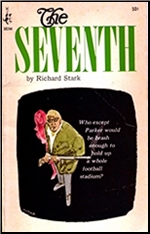Fri 14 Dec 2018
DIAMOND MEN. Lions Gate, 2000. Robert Forster, Donnie Wahlberg, Bess Armstrong, Jasmine Guy. Screenwriter-director: Dan Cohen.
This a movie with a lot of facets to it, and I can’t think of a better word to use. What it is at the beginning, is a road film. After having had a heart attack and no longer insurable, a long time diamond salesman by the name of Eddie Miller (Robert Forster) is forced to show his replacement, Bobby Walker, the ropes (Donnie Wahlberg).
It does not go well. Forster is in his mid-50s, laid back, likes jazz and quiet motels at night. Bobby is young, brash (ultra brash) and likes a lot of night life (girls picked up in bars).
But then, not too surprisingly, it turns into a buddy film. If two men sit next to each other in the front seat of a car for miles on end, taking the same sales route through central Pennsylvania over and over again, they begin to talk to each other and reveal things about themselves, no matter how opposite in personality they are. Things they certainly wouldn’t bring up on their first day together, which goes disastrously bad.
Eddie’s wife died several years ago. They had a happy marriage, and Eddie has not had a date with a woman since. Bobby decides to do something about that. This does not go well, but Bobby persists, and the film now transforms itself from a raunchy-ish sex film to a romantic one. What Eddie does not know, though, is that Katie (Bess Armstrong), the woman Bobby has found for him has a — shall we say — past.
At which point the movie decides to go in a totally different direction, one that I won’t tell you about because I have to leave something for you to see on your own. And while this is a very minor film, by Hollywood blockbuster standards, I think you should. See it yourself, that is.
And one of the major reasons why is the presence of Robert Forster in this film. He has one of those faces that looks lived in, with the ability to make you know what he’s thinking by simply watching his face, maybe even more than by the words he’s saying. I don’t know how it does it, but he does.


